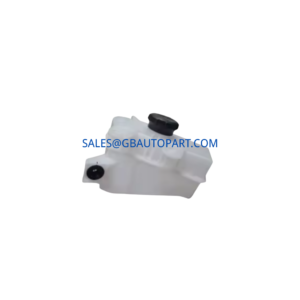
Introduction: Understanding the Importance of Body Parts
When it comes to vehicle maintenance and repair, people often focus on the engine, brakes, and tires. However, the integrity of a vehicle’s body is just as critical. Each component, no matter how small, contributes to the overall safety, performance, and aesthetic of the car. Among these essential parts is the Body Part 66311-1R350, a component that might not be as well-known as a headlight or a bumper, but plays a fundamental role in the vehicle’s structural framework. This article will explore what this specific body part is, why it is so important, and what you need to know about its function and application. We’ll delve into its features, the materials used, and why using a genuine or high-quality OEM replacement is non-negotiable for your car’s longevity and your personal safety.
What Exactly is the Body Part 66311-1R350?

To fully appreciate its significance, we must first identify what the Body Part 66311-1R350 is. This specific part number corresponds to a front fender apron for certain Hyundai Accent models, specifically from the fifth generation (RB series, 2011-2017). The front fender apron is not the visible fender panel you see on the outside. Instead, it is a crucial structural component located inside the engine bay, behind the front wheel well. It is an integral part of the vehicle’s unibody structure, forming the inner wall of the engine bay and supporting key components.
The fender apron’s primary role is to provide a mounting point for the fender, but its importance extends far beyond that. It is a fundamental part of the vehicle’s crumple zone, designed to absorb and dissipate energy during a frontal collision. This helps protect the engine and, more importantly, the occupants of the car. In essence, it is a silent protector, working tirelessly to maintain the vehicle’s shape and integrity, even under duress.
Key Features and Specifications of the Body Part 66311-1R350
The Body Part 66311-1R350 is more than just a piece of stamped metal. Its design is the result of extensive engineering and crash testing. Let’s break down its key features:
1. Material Composition: Typically, this component is made from high-strength steel or a combination of advanced alloys. The choice of material is not random; it is meticulously selected to balance strength, weight, and flexibility. The material must be rigid enough to maintain the vehicle’s shape but also ductile enough to deform in a controlled manner during an impact. This controlled deformation is what makes the crumple zone effective.
2. Precision Engineering: The dimensions and shape of the Body Part 66311-1R350 are precise to the millimeter. This precision is essential for a proper fit and for ensuring that all other connected components—such as the inner fender, radiator support, and various brackets—align correctly. A poorly fitting part can lead to misalignments, which can compromise the entire front structure of the vehicle.
3. Corrosion Resistance: Given its location within the wheel well and engine bay, the part is constantly exposed to moisture, road salts, and other corrosive agents. A high-quality Body Part 66311-1R350 is coated with a primer or E-coat (electrophoretic deposition) to prevent rust and corrosion. This coating ensures the part maintains its structural integrity over the vehicle’s lifespan.
4. Integrated Design: The fender apron isn’t a standalone component. It features multiple mounting holes, reinforcement points, and weld locations designed to integrate seamlessly with the rest of the vehicle’s unibody. These attachment points are strategically placed to transfer collision forces away from the passenger cabin, distributing the energy across the vehicle’s structure.
The Role of the Body Part 66311-1R350 in Vehicle Safety and Performance
While its purpose may seem simple, the function of the Body Part 66311-1R350 is multifaceted and absolutely vital.
Structural Integrity: The fender apron is a foundational part of the vehicle’s skeleton. It helps maintain the alignment of the front end, which affects everything from how the hood closes to how the front wheels are aligned. Any damage or warping to this component can compromise the entire front structure, potentially leading to issues with suspension, steering, and overall handling.
Crashworthiness: As part of the crumple zone, its primary safety function is to absorb kinetic energy during a collision. By deforming in a predictable manner, it slows down the rate of deceleration, which significantly reduces the forces transmitted to the passenger cabin. This design is critical for preventing serious injuries to the occupants. Replacing a damaged Body Part 66311-1R350 with a sub-standard alternative can severely undermine this engineered safety feature.
Support for Ancillary Components: The fender apron provides critical support for numerous other parts. The headlight assemblies, wiring harnesses, and various engine bay components are often mounted directly to or near the apron. A damaged or misaligned apron can lead to vibration, stress on connected parts, and eventually, failure of those parts.
Why You Should Choose the Right Replacement Part
In the aftermarket parts world, there are many options available. However, when it comes to a structural component like the Body Part 66311-1R350, the choice you make is paramount.
Genuine OEM vs. Aftermarket:
- Genuine OEM (Original Equipment Manufacturer) Parts: These parts are made by the same company that supplied the parts for your vehicle when it was assembled. They are guaranteed to be a perfect fit and to meet the manufacturer’s strict safety and quality standards. The Body Part 66311-1R350 is an example of such a part. They are often more expensive but offer unparalleled peace of mind.
- High-Quality Aftermarket Parts: Some aftermarket manufacturers produce parts that are designed to meet or exceed OEM specifications. These parts can be a good alternative, but it is essential to research the brand and ensure they have a reputation for quality and safety.
- Sub-Standard Parts: Unfortunately, the market is also flooded with low-quality, generic parts that may be cheaper but lack the necessary material quality, precision, and corrosion resistance. Using such a part for a structural component is extremely dangerous. It may not deform correctly in an accident, potentially causing more harm, and could rust out much faster, compromising the vehicle’s long-term integrity.
The cost savings from a cheap part are insignificant compared to the potential safety risks. For a part like the Body Part 66311-1R350, it is an investment in the vehicle’s structural integrity and, more importantly, in the safety of its passengers.
Installation and Replacement Considerations
Replacing a component like the Body Part 66311-1R350 is not a simple task and should be performed by a professional. The process involves precise cutting, welding, and alignment.
Proper Diagnosis: Before any work begins, a thorough inspection is needed to assess the extent of the damage. Often, a fender apron is replaced as part of a larger structural repair following a collision.
Specialized Tools and Skills: Body shops use specialized equipment, such as welders and frame machines, to ensure the new part is installed correctly and the vehicle’s frame is returned to its factory specifications.
Post-Installation Checks: After installation, the vehicle’s alignment must be checked and adjusted as needed. A final inspection ensures that all components are correctly aligned and secured, restoring the vehicle to its pre-accident condition and safety standards.
Conclusion
The Body Part 66311-1R350 is a prime example of a component whose value is not immediately obvious but is absolutely critical to a vehicle’s function and safety. It serves as a cornerstone of the vehicle’s structural integrity, playing a vital role in crash protection and providing a foundation for other key systems. For vehicle owners, understanding the importance of this part and choosing a high-quality replacement is a testament to a commitment to safety and vehicle longevity. Whether you are a car enthusiast, a DIY mechanic, or simply a driver, recognizing the significance of every part, no matter how hidden, is essential. The next time you consider a repair, remember that investing in quality components like the Body Part 66311-1R350 is an investment in your safety and your car’s future.
FAQs
Q: What is the specific car model that uses Body Part 66311-1R350?
A: This part is specifically for certain Hyundai Accent models from the 2011-2017 (RB) generation. Always cross-reference the part number with your vehicle’s VIN to ensure compatibility.
Q: Can I use a generic or universal fender apron instead of Body Part 66311-1R350?
A: No, it is highly inadvisable. A generic part will not have the same precise dimensions, material composition, or crumple zone characteristics as the genuine part. Using such a part can compromise the vehicle’s structural integrity and passenger safety in the event of a collision.
Q: How can I tell if my fender apron is damaged?
A: Damage is typically visible after a frontal or side collision. A qualified body shop technician can inspect the engine bay and front structure for signs of buckling, warping, or other deformities that indicate the need for repair or replacement.






